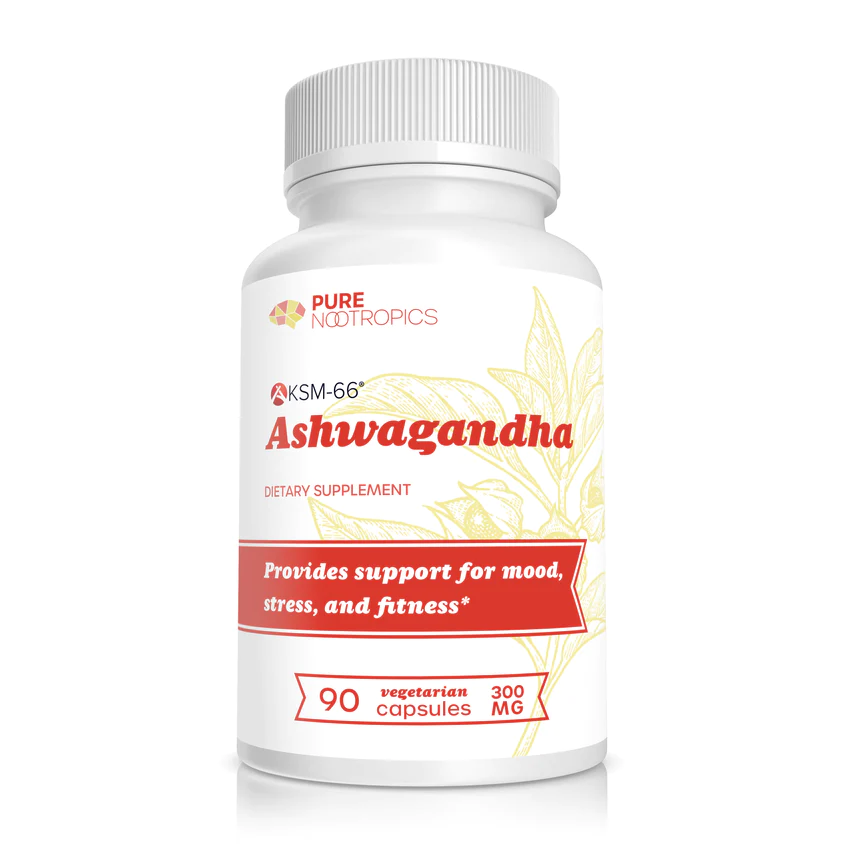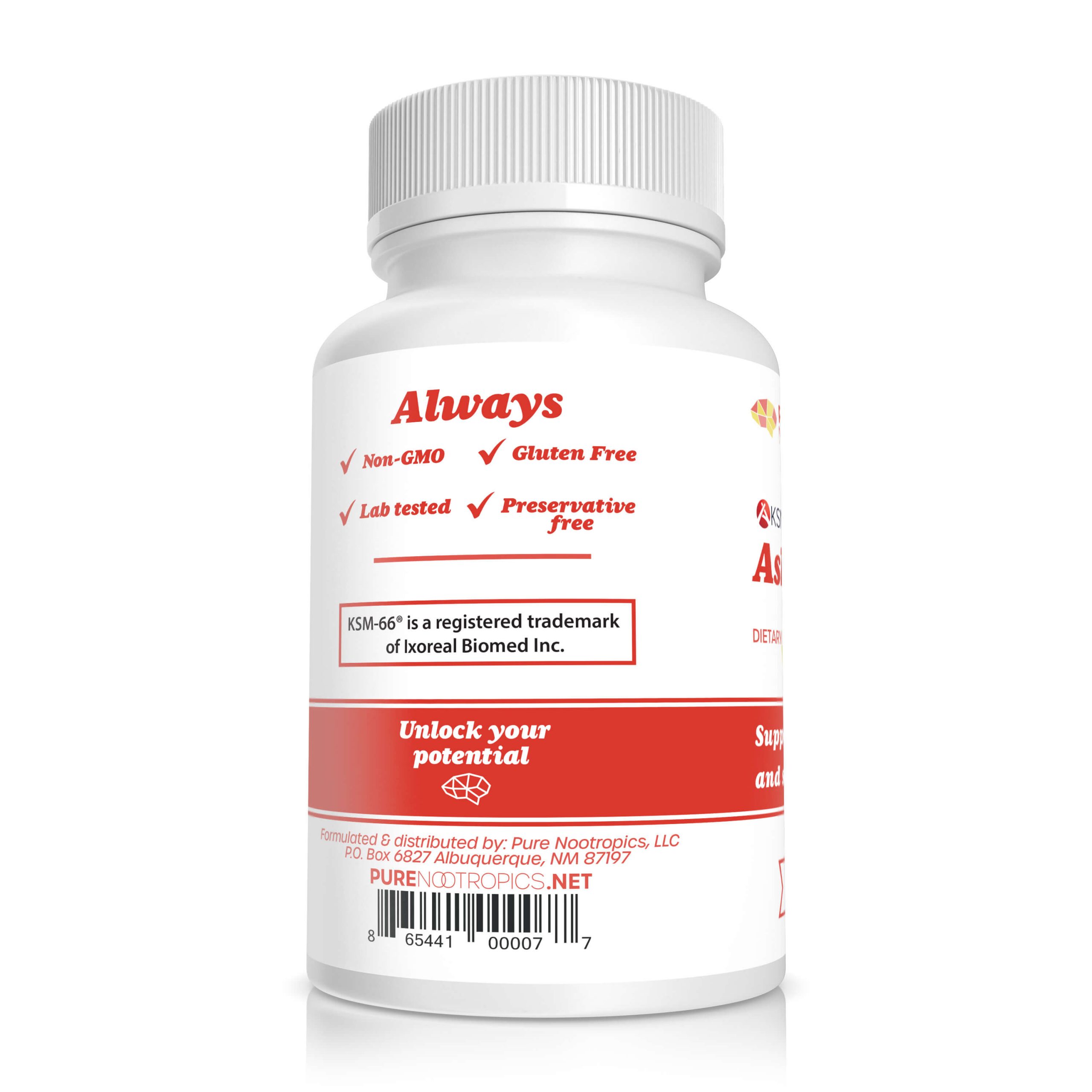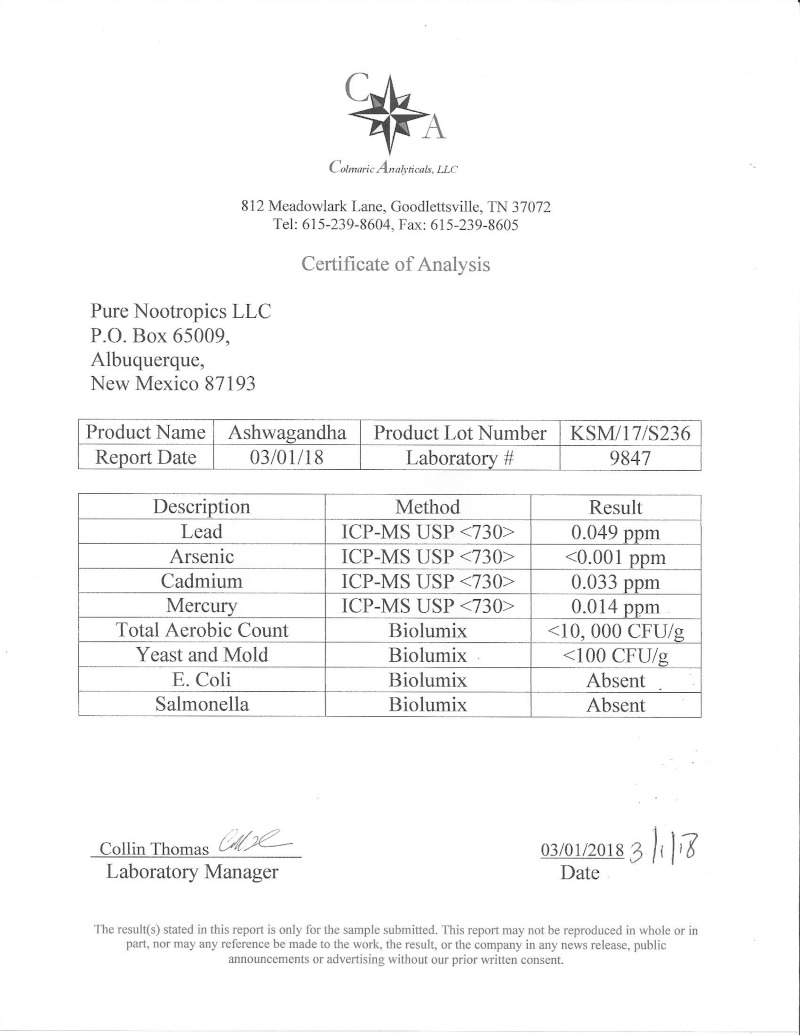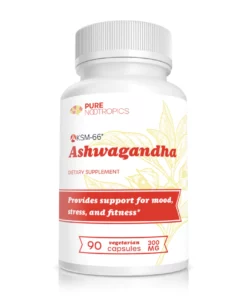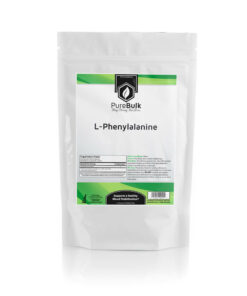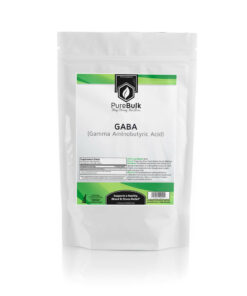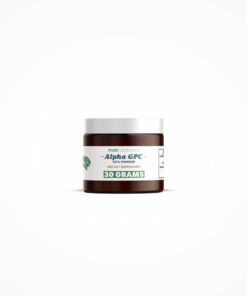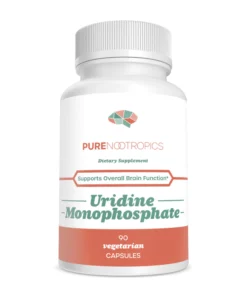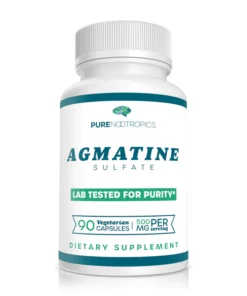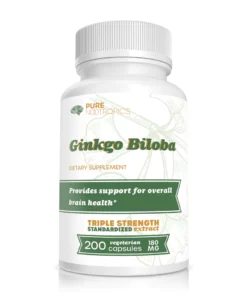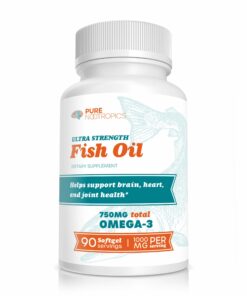Ashwagandha Extract KSM-66 300 mg Capsules
From $8.99
Quick Points:
- KSM-66® is the preferred version of Ashwagandha for a sense of relaxation during daytime hours
- Check your extract percentage and plant parts used if you’re not taking KSM-66 (you want the root, not the leaf)
- Capsules provide the convenience of starting with the ideal dosage
- 300 mg vegetarian capsules
Ashwagandha extract powder available.
Also known as: Withania somnifera, Indian ginseng
Ashwagandha KSM-66®
This herbal supplement is categorized as an adaptogen. Adaptopgens promote healthy stress levels if taken prior to stressful events.*
The roots and leaves of the withania somnifera plant contain steroidal lactones called withanolides. The patented KSM-66 version of ashwagandha is standardized for at least 5% withanolides.
One of the primary reasons to use KSM-66 instead of a generic version is that KSM-66 only uses roots. The reasoning behind this, according to the KSM-66 site, is that clinical studies involving ashwagandha all use root extracts. Another reason that a root-only extract is preferred is that, on average, ashwaghanda root samples have lower concentrations of withaferin-A, an undesirable lactone in withanolides. Also, the Ancient Ayurverda texts which mention this herb only recommend using leaves for topical solutions.
Why is the Withanolides Percentage Important?
Withanolides encompass over 300 naturally occurring compounds found primarily in the nightshade family of flowering plants.
Standardized ashwagandha extracts guarantee a certain percentage of withanolides by weight. If you purchase a non-standardized extract, or an extract with a much lower percentage of withanolides, then it’s uncertain if you will experience the benefits of this herbal supplement. Another patented version of ashwagandha, Sensoril®, has a different standardized percentage in order to elicit a separate set of benefits than the KSM-66 version.
How does the Sensoril version it compare to KSM-66?
Sensoril’s version is standardized for at least 10% withanolides. Despite this being higher than KSM-66’s, it doesn’t necessarily mean double the perceived benefits. An extract with 10% withanolides is better for promoting restful sleep and cardiovascular function.*
If you are seeking to promote healthful stress levels without sedating effects, then KSM-66 is a more appropriate choice, especially since 5% withanolide extracts have more anecdotal reports of promoting mental alertness, memory, and cognition.*
Why Ashwagandha?
In modern society, we all lead busy lives. We can all relate to anxiety and stress in our daily lives, no matter the source. We know that excess stress can do damage to mental well-being, as well as your body’s physical health. Excess stress leaves you in a bad mood and your brain not working at its peak ability. Example: we’ve all experienced “losing” our keys when we are running late and frantically trying to get out the door, only to realize they were hiding in plain sight. If only there were a natural solution to help you stress less, perform better, and enjoy the twists and turns that life throws at you.
Ashwagandha is an herb that has been used since ancient times for its ability to help with stress management and brain function. The ashwagandha plant (Withania somnifera) is a shrub with yellow flowers, and it can be found in India and North Africa. The benefits we seek come from the root of the plant. The root’s extract can be supplemented in powder or capsule form to help you manage the stress of your hectic life and keep your brain sharp.
Benefits
KSM-66 ashwgandha promotes a sense of relaxation without being sedating.* Despite the translation of the Latin word somnifera, “sleep-inducing”, most Ashwagandha supplement varieties, including KSM-66 should not cause fatigue under normal circumstances.*
Supporting healthy levels of cortisol* is an often overlooked benefit of this herb. This explains ashwagandha’s presence in pre-contest and cutting workout supplements. As training intensity and volume increases your body’s cortisol levels increase. If cortisol levels become too high, then overtaining effects may occur.
This supplement also helps in reducing the perception of fatigue.*
Although ashwagandha is often marketed as promoting memory and learning functions, there is a lack of scientific evidence to confirm these benefits in otherwise healthy individuals.
Dosage
The ideal dosage for ashwagandha is between 300mg and 500mg, according to Examine.com. This makes 300mg capsules perfect for starting at the lower end of the dosage spectrum. Assess your tolerance at this level, then only take a second capsules if needed.
Do not take more than two capsules daily. Due to withanolides being comprised of many compounds, the exact half-life varies.
Withaferin A, found primarily in the leaves of the plant, seems to be the only withanolide with significant studies on half-life, which was around 7 hours. However, KSM-66 Ashwgandha has only negligible levels with withaferin-A due to this lactone’s undesirable properties.
Capsules or Powder?
Encapsulated ashwagandha is perferred since the powder has a strong, bitter taste. However, KSM-66 ashwagandha is anecdotally less unpleasant than other brands of the extract. It has a more neutral taste with some describing it as “cheesy.” With the KSM-66 variety, it comes down to convenience that capsules provide of not having to weigh each dose.
Allergen info: Contains milk allergens
| Size | 90 Capsules, 180 Capsules |
|---|

